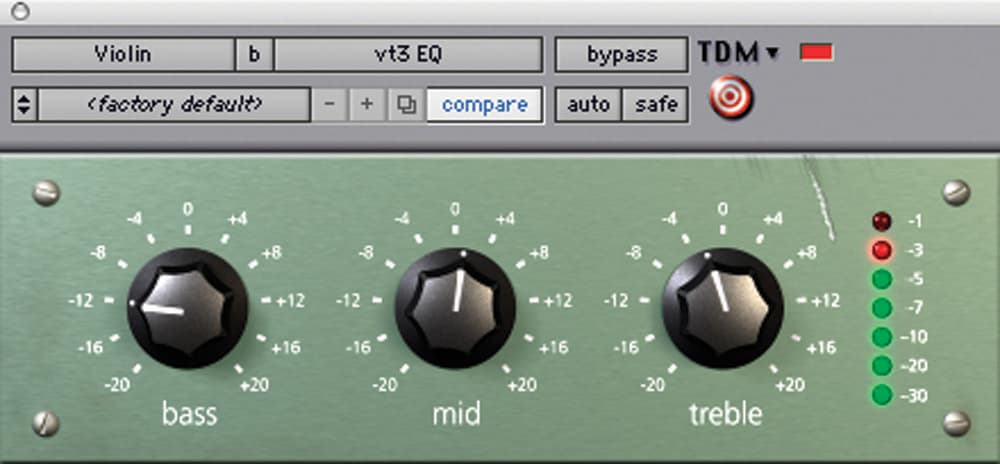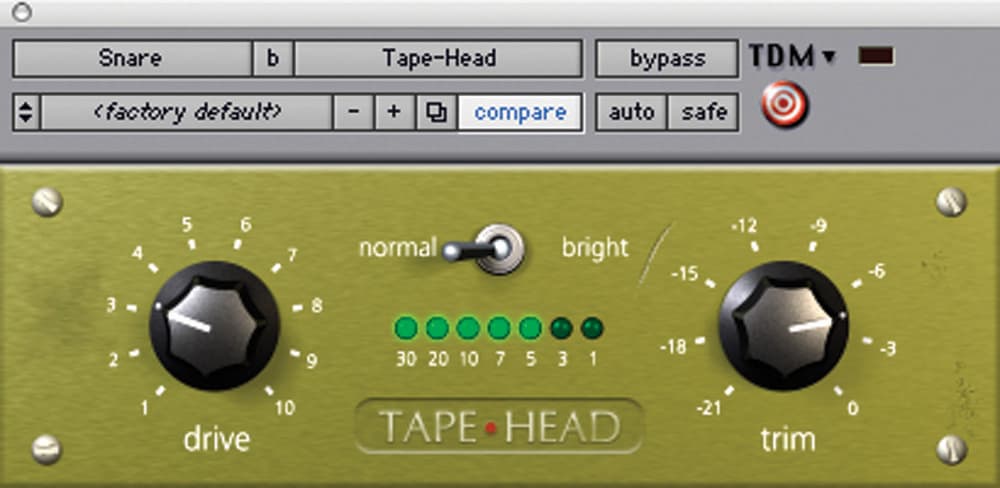
Review: Massey Plug-Ins
Cheap plug-ins aren’t always the poor cousin to big brands and big price tags.
Review: Simon Leadley
Once in a while you come across a product that not only works well, but it’s also incredibly well priced. Most ProTools plug-ins, for instance, don’t exactly fall into the inexpensive category and, worse still, there’s the inevitable RTAS vs TDM price discrepancy. However, this is not the case with the new suite of plug-ins produced by Steve Massey, which are both nifty and affordable. In fact, they can be used for free, if necessary, although the free versions do, inevitably, come with certain in-built limitations. (The primary missing functions include Save and Restore, which effectively means the plug-ins lose their settings when a session is closed and re-opened. Also, none of the demos run higher than a 48k sampling rate, and some have mono/stereo limitations).
If you do fork out for the Massey plug-ins you’ll quickly notice the lack of any onerous copy protection regime. Moreover, Mr Massey allows you to use them legally on up to three machines! (Who doesn’t have a machine at home, at work and a laptop with LE installed for going on the road?)
So after a decidedly breezy download and authorisation routine I threw the Massey plugs into the real-world rough ‘n’ tumble of work in my studio. I soon spotted that two of the plug-ins had ‘scratched’ and ‘stained’ faceplates! (I rang Steve Massey – who’s a friendly and knowledgeable guy – and I asked him if there was a discount for the plug-ins with scratched faceplates… guffaw!) Anyway, vintage aesthetics aside… let’s delve deeper.
THREE-WAY EQ
The VT3 represents a bog standard ‘Old Style’ EQ module – the bass, mid and treble controls of which have been selected for musicality. I’ve used the VT3 on many instruments including guitar, piano and drums. The mids provide punch and the tops are silky smooth. There is very little phase shift in this plug and I now reach for it whenever I just want to add a ‘little something’ to a sound. It’s open and transparent and the metering is accurate and reminiscent of older classic gear.
CT4 EXPLOSIVES
The CT4 compressor continues the simple concept of the VT3 EQ with only two rotary controls for compression and gain makeup and two switches that toggle between slow and fast attack and release times. The black-faced gain reduction meter has great ballistics reminiscent of the older-style bus compressors. Again, the CT4 has become a great favourite of mine for all compression jobs, particularly vocals, where its smooth and transparent operation provides good dynamics control without any noticeable pumping or distortion. Most importantly, the emotion of the performance is retained. The beauty of the CT4 is its simplicity and great visual feedback. The other amazing thing is how efficient this plug-in is (actually all Massey plugs are super efficient). This means that you can afford to use them on all tracks with very little impact on system resources. Like the VT3, you can use the CT4 for as long as you like for free, but when you pay for the plugs (which I urge you to do) you open all the other features: 88.2 – 192k support, clip-light functionality, multi-mono support, session restore functionality, save-and-restore functionality, automation and bypass switching.
NEED TO KNOW

The VT3 ‘old style’ EQ.

The CT4 compressor.
HEAD TO HEAD
Next in the Massey suite is the Tape Head plug-in, which is a simple but effective tape saturation/distortion emulator. This allows you to add some grunge to otherwise clean recordings and impart some ‘heritage’ sound to the digital domain. Years ago there was a tape emulation that I loved called DuyTape, but at some point the company that made it went broke and there’s never been a satisfactory replacement since – until now. The Massey Tape head plug is very simple to use with only two rotary controls: one for Drive (distortion), the other for Trim (to trim the output level). There’s also a toggle switch for Normal and Bright tone control, which give a nice edge to bright sounds without the shrillness that EQ can impart.
The Tape Head allowed me to get everything from subtle saturation with a nice edge, to outrageous overdrive distortion. I preferred the plug when it was working more subtly, but it’s good to know it has the range to really mess up a sound.
This is one hell of a useful plug-in for post and music alike, although I suspect Tape Head will be adopted by anyone wishing to put back some analogue flavour (or is that flava now?) into their digital recordings.

The Tape Head distortion/saturation emulator.

The L2007 mastering limiter.
L2 OR 007?
Last but by no means least is the L2007 Mastering Limiter. Users of the L1 from Waves and Maxim from Digidesign will be familiar with this style of mastering peak limiter. The difference really lies in the interface and natural sound the L2007 provides. The controls are elegant and very simple to master, while the musical modes (which are labelled ‘Loud’, ‘Mellow’, ‘Smooth’ and ‘Vibrant’), in tandem with the meters, make setting a useful patch very easy indeed.
I inevitably compared the results from the L2007 to some of my other peak limiters and was very pleasantly surprised. The L2007 is easily as good – if not better – than any of the other mastering ‘brickwall’ limiters and uses full 48-bit precision. I’d like to see a proper bypass (as opposed to the generic ProTools bypass) to make in/out comparisons easier – you really have to do a comparison with matched levels to make a proper assessment of any mastering process. So many times I’ve been in a mastering session and the engineer has said; “Is that better?” when an EQ or compressor has been added. Often it sounds louder, or louder and brighter, but unless you compare apples with apples it’s not an accurate comparison. (Part of this is due to the way our hearing is contoured such that a louder signal will seem harmonically different to a quieter signal when in fact no EQ has been applied.)
I tested all the Massey plug-ins with a ProTools TDM system on Mac OS and PT 7.x. and experienced no crashes or weirdness. They all worked as expected and sounded excellent. Their value for money is brilliant – ludicrous if you’re using the free versions! There are versions for Mac and PC (and I assume that Intel Mac versions for running the new LE will soon exist). I, for one, am a big fan of these plugs. They deserve attention… and quickly, as these finds tend not to stay dirt cheap for long.
















RESPONSES